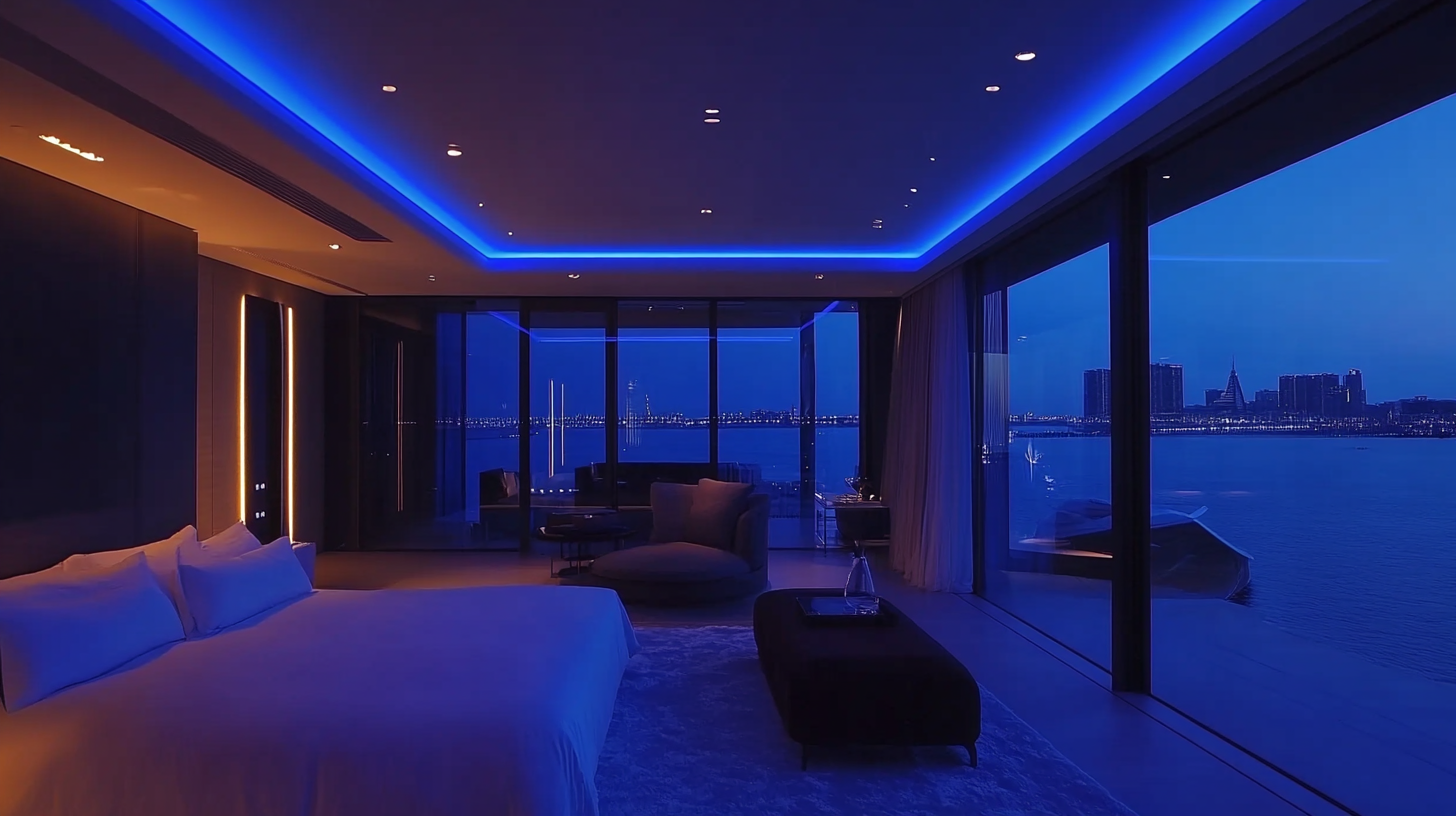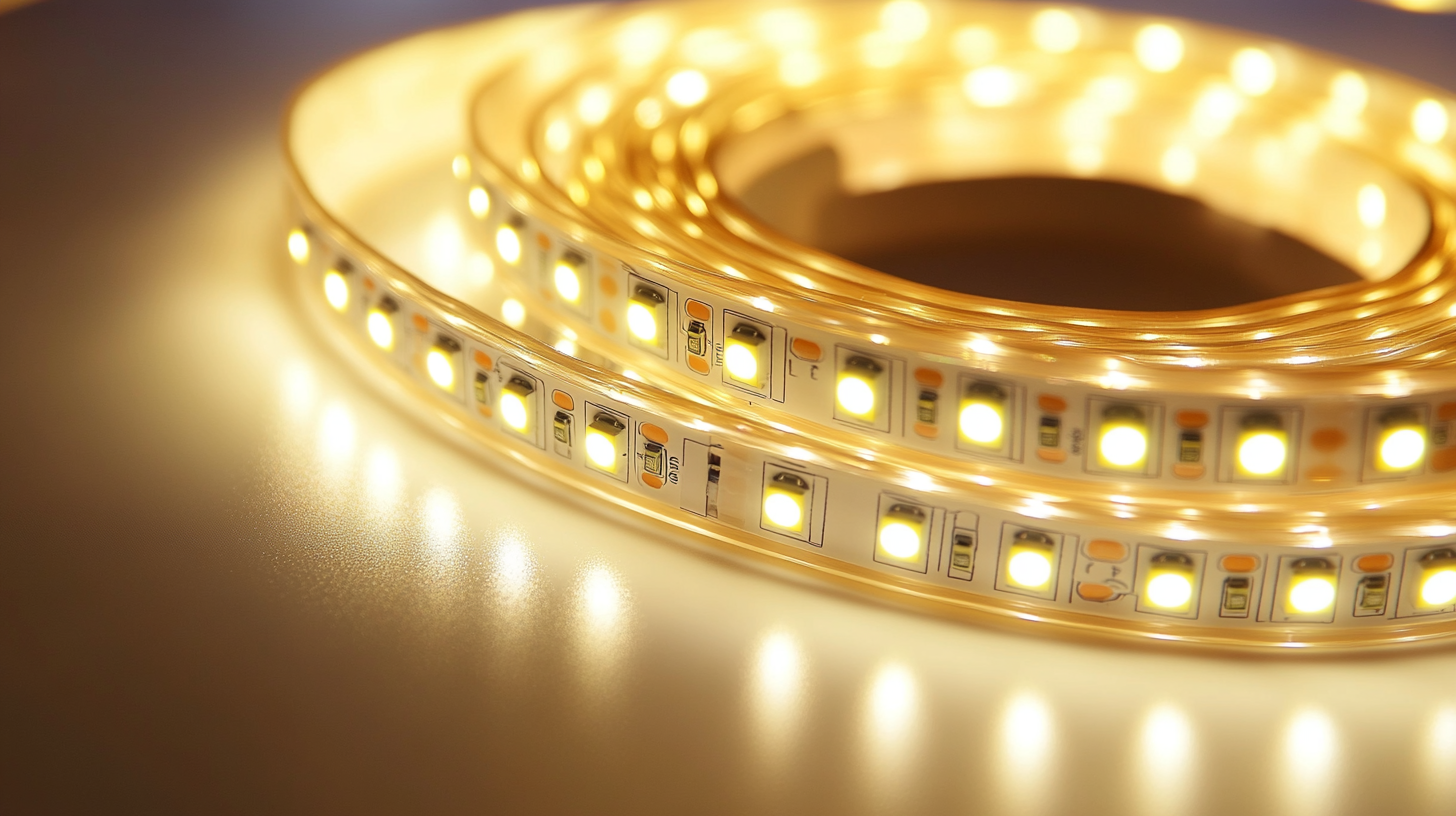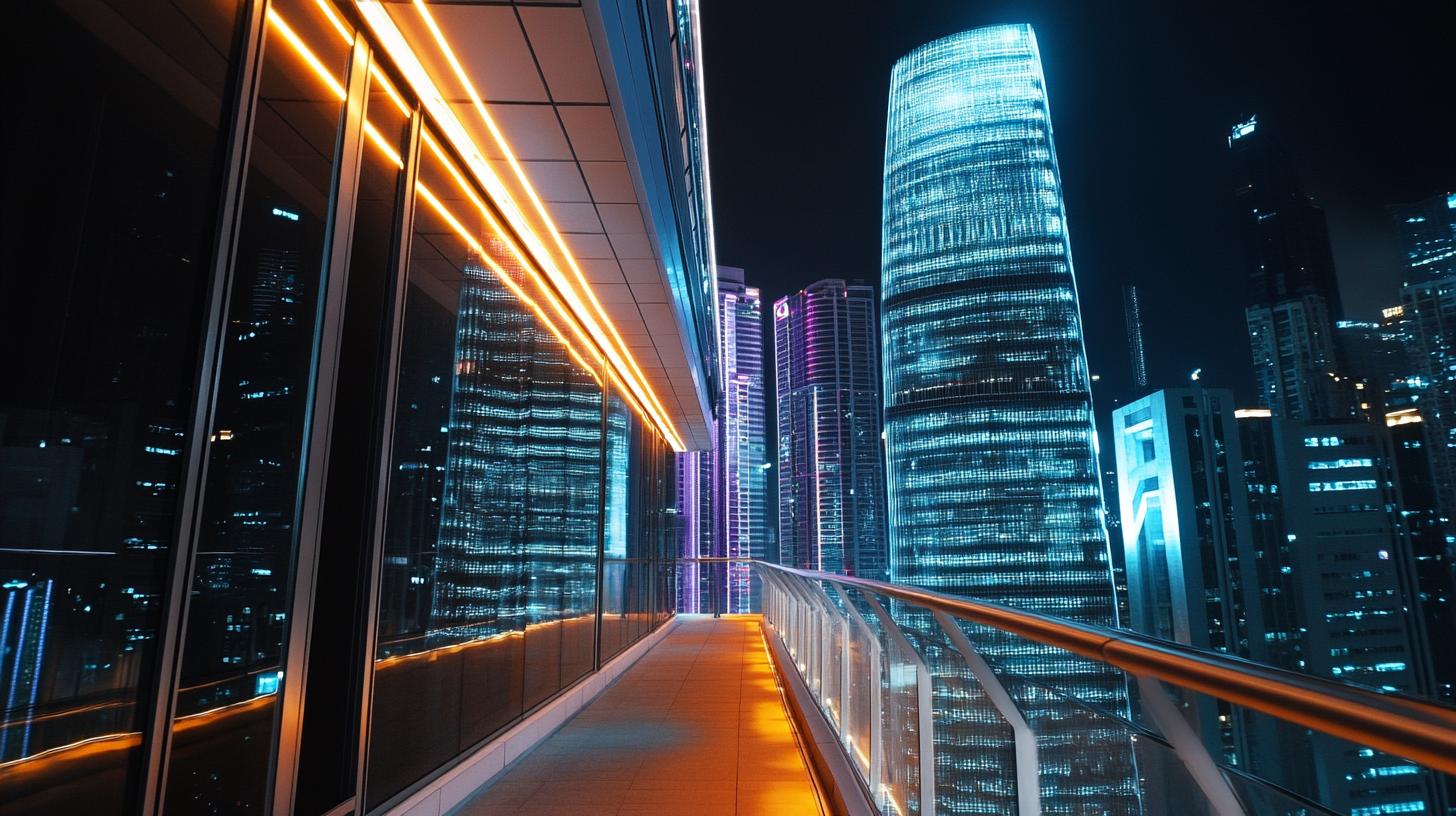Edison LED Lighting
Projects
Exploring the Unique Features and Applications of LED Strip Lighting for Global Buyers
A demand for innovative and versatile lighting solutions has witnessed the rise of LED strip lighting becoming rapidly accepted by designers and consumers alike. According to ResearchAndMarkets, the global LED lighting market was valued at about $90 billion in 2020 and is expected to reach $150 billion by 2026, with LED strip lighting being a key element of this growth. These lighting strips have gained rapid popularity due to their energy efficiency, versatility, and charm for residential and commercial applications.
As the market continues to grow, it becomes more pertinent that international buyers understand the features and application qualities of LED strip lighting. With the introduction of technology, manufacturers' LED strips now offer multiple colors and brightness levels as well as added features like smart connectivity. Not only do these various capabilities create beautiful spaces, but they also help conserve energy and achieve sustainability goals. In this blog, we will discuss the unique features of LED strip lighting, their varied applications, and why they are a worthy investment in today's lighting domain.

Understanding the Basics of LED Strip Lighting: What You Need to Know
Work typically demands flexibility from lighting, but LED strip lighting is fast becoming the universal favorite in all types of applications due to its highly flexible nature and energy-saving promise. A basic understanding of this type of light allows for enlightening decisions by the end-user as well as commercial applications. LED strips are typically an ensemble of multiple small LED lights wired together on a flexible PCB so that an end user can easily install them in odd-fitting spaces. Different lengths, colors, and brightness variations make LED strips quite versatile in terms of different design needs. The excellent property of the LED strip light is versatility. Users are allowed to cut strips to the desired length, thus making them available for any type of project-from decorating the home to professional applications. In addition, many LED strips present a variable color temperature option-all the way from warm whites to highly saturated colors. Such versatility increases visual appeal and creates use possibilities, such as homes needing accent lighting, workspaces requiring task lighting, and retail environments wanting exciting displays. Another important factor is the ease of fitting. Typical LED strips usually are stuck to surfaces with an adhesive backing, providing for quick and effective application on surfaces of all types. Some strips are even made weather resistant, thus allowing for outdoor fittings. With respect to energy efficiency and longevity, LED strip lights help protect the planet while also being very economical for buyers across the world interested in improving their lighting solutions.

Versatile Applications of LED Strip Lighting in Home and Commercial Spaces
LED strip lighting has brought versatility and effective illumination into residential and commercial areas. With their flexible application, creative solutions can be derived from these light strips for highlighting home architectural features or presenting functional lighting solutions for retail purposes. Their design promotes the bending, which permits fit in different interiors to give innovative shapes appealing to the overall aesthetics and functionality of all spaces.
In homes, strip lights can work in kitchens, living rooms, and even bathrooms, integrating into ambient lighting or direct lighting on certain areas. For instance, under-cabinet lighting itself adds contemporary appeal to kitchens while allowing for improved visibility. In the same way, in commercial spaces, LED strip lights can be made to create a welcoming atmosphere by taking customers from two retail areas to places displaying merchandise. When one discusses LED strip lights, one must also mention the adaptability that these lights have, which puts them among the very few options provided to design professionals or property owners, especially in light of the soaring market growth-funds, $94.5 billion in 2024, projected to be seriously expanded thereafter.
The way LED strip lighting delivers energy savings is among its most valuable tools in sustainable designs. A method that consumes less energy during executing great illumination would be for those who want to preserve beauty and environmental consideration to use. Since the technology behind LEDs is advancing, strip-light applications now hold unlimited opportunities for exciting developments commercially and at home.LED strip lighting has brought versatility and efficient illumination into residential and commercial areas. With such flexible use, creative solutions may even derive more uses for these light strips-from accenting home architectural features to offering functional lighting solutions for retail layouts. Allowable for bending that fits into different interiors gives room for innovational forms appealing to the general aesthetics and functionality of all spaces.
In homes, strip lights can work in kitchens, living rooms, and even bathrooms, integrating into ambient lighting or direct lighting on certain areas. For instance, under-cabinet lighting itself adds contemporary appeal to kitchens while allowing for improved visibility. In the same way, in commercial spaces, LED strip lights can be made to create a welcoming atmosphere by taking customers from two retail areas to places displaying merchandise. When one discusses LED strip lights, one must also mention the adaptability that these lights have, which puts them among the very few options provided to design-patients, especially in light of the soaring market growth-funds, $94.5 billion in 2024, projected to be seriously expanded afterward.
As the demand for energy-efficient lighting solutions rises, LED strip lighting is set to play a crucial role in sustainable design. Its ability to reduce energy consumption while providing high-quality illumination makes it a preferred choice for those looking to balance aesthetics with environmental responsibility. With continued innovations in LED technology, the potential applications for strip lighting are endless, paving the way for exciting advancements in both home and commercial settings.

Innovative Features of LED Strip Lighting: From Smart Technology to Customization
LED strip lights have changed the whole mentality towards lighting into a new dimension on the residential as well as commercial space. Smart technology is among the derived most advanced innovations offered by these flexible light strips. The growing demand for interlinked lighting online has punched the smart lighting market figure to $75.8 billion by 2025, according to the Grand View Research report. These are some of the features that the LED strips provide, such as controlling their brightness, selecting any given color, and synchronizing lights with music through smartphone controls. Such features not only set the mood but also help conserve energy.
Another highly attractive feature that reaches out to the global clientele is customizability. With so many options and variations to offer, one could select from a large range of strips that can be shortened or lengthened in length, color, or brightness, to fit their individual design need. Markets and Markets confirm that the LED lighting market is poised for growth at a CAGR of 13.2% during 2020-2025, thanks to the high demand for customizable lighting features. This gives homeowners and businesses unique customizable spaces-whether it is an atmosphere of intelligent lights in a living room or functional lights in a commercial workspace.
An additional growing trend is the integration of LED strip lighting with smart home systems, which shows how much innovation is possible in this area. Many brands now provide LED strips that work with prominent smart home ecosystems, such as Amazon Alexa and Google Assistant, creating possibilities for voice control and automation. Advancing further into the future, more applications will continue to emerge for LED strip lighting, allowing for even more opportunities for customization and intelligent design.

Choosing the Right LED Strip Lighting: Key Factors for Global Buyers
Regarding the choice of LED strip lighting, there are a plethora of key considerations that a global buyer must keep in mind to consider their choice well-informed. First and foremost, a basic understanding of different types of LED strips in the market is essential. They include choices from standard white LED strips all the way to RGB strips that feature a spectrum of colors. Buyers need to apply such knowledge to assess their particular needs-whether for ambient illumination, decoration, or for accentuation of a particular area.
Other major factors to be considered are brightness and color temperature of LED strips. Depending on the application, brightness requirements differ; for instance, task lighting should provide more brightness than ambient lighting. Yet another important aspect is that color temperature can help set the mood in any room. Buyers should look for a warmer light (2700K or so) to provide that COZY environment, while cooler daylight tones (5000K+) are usually preferred in work environments.
Also, quality and durability of LED strips should never be neglected. It is a wise choice to go with a brand that has a good reputation, customer reviews in general, and a warranty. Then, buyers should look into the installation requirement and flexibility the strips will offer on their intended use. An overview of these considerations would put global buyers in a better position to choose the best LED strip lighting for their individual needs.
Sustainability and Energy Efficiency: The Benefits of LED Strip Lighting Solutions
The increasing trend among global consumers is the popularity of using LED strip lighting in home interiors, not only because of its beauty, but also because it is sustainable and energy efficient. The world is facing some consequences from climate change and the need for sustainable energy consumption; LED lights would prove to be a feasible answer to these problems. They are also light strips that use less energy compared to incandescent and fluorescent light sources, definitely a good option for an eco-aware shopper.
Energy-efficient LED strip lights can be traced to their innovative features. Instead of wasting much of its electrical energy as heat like any normal bulb, an LED converts most of its electrical energy into light. This means less electricity is needed to produce the same brightness used to create much lower energy bills and carbon footprints. On top of that, LED strip lights can last up to 25,000 hours or longer, so there will be less need to often change them, which will eventually leave a lighter footprint on the environment for manufacturing and disposal of lighting products.
This further leads to sustainment with the materials used for LED strip lighting. Most manufacturers today are using environmentally friendly materials in producing components that tend to eliminate dangerous substances like mercury, which is found mostly in conventional bulbs. Besides, dimmable features of LED strip lights allow light to be easily dimmed based on individual preference, hence leading to more energy savings. Whether for aesthetic purposes or functional applications, having LED strip lighting brings people to a step closer to a green future.
